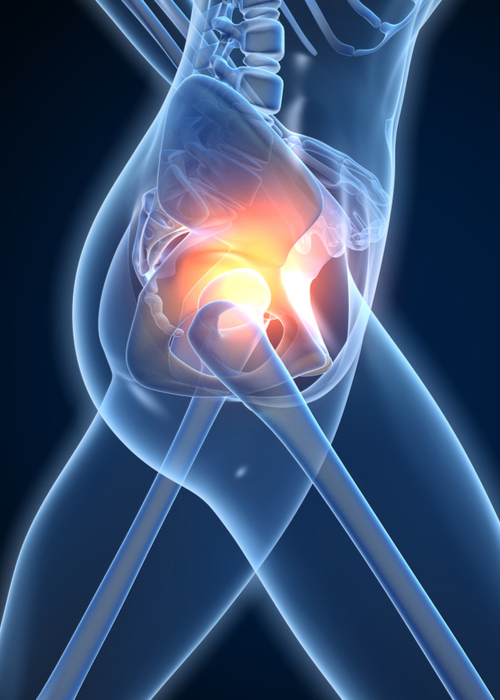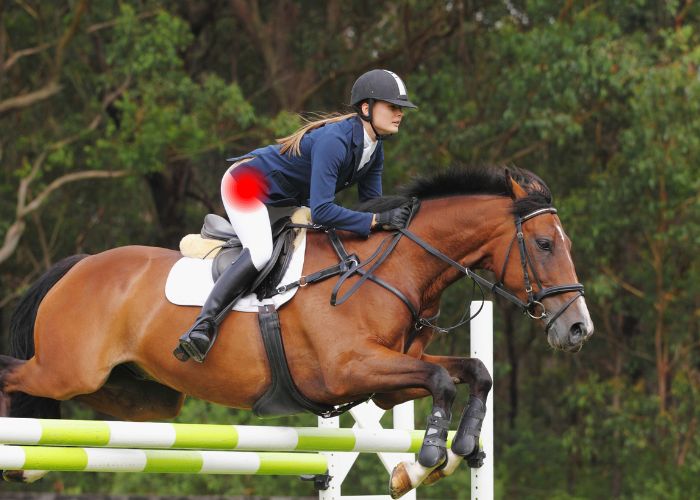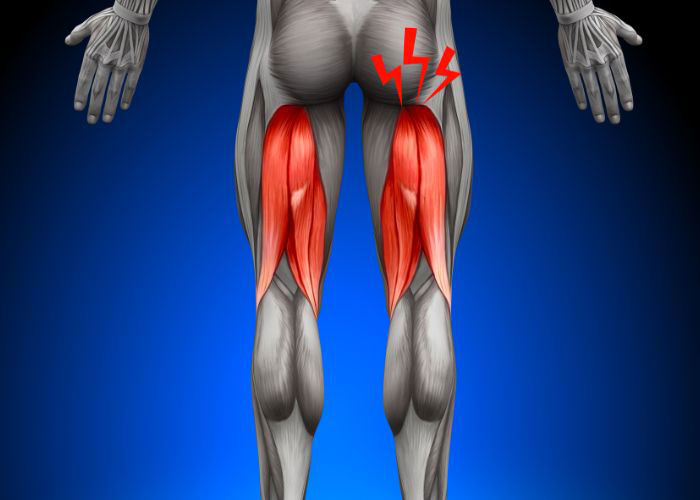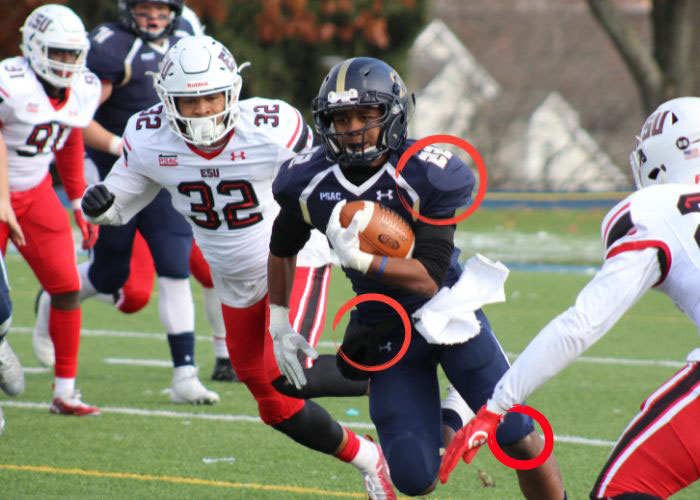What is subspine impingement?
The anterior-inferior iliac spine (AIIS) is a bony eminence found on the outside border of the ilium wing (upper pelvis). This extra-articular structure is located just outside of the hip joint and is the site of attachment for the iliofemoral ligament and rectus femoris muscle. Occasionally, abnormal contact can occur between the AIIS and the neck of the femur (thigh bone) causing subspine impingement. This newly recognized painful hip condition has a number of etiologies. Most often, a traumatic hip injury involving an avulsion fracture can precipitate this type of hip impingement. Males under the age of 30 are more frequently affected than any other gender or age group. Individuals that perform repetitive or extreme hip flexion movements, particularly athletes, are more likely to develop subspine impingement.

What is the treatment for subspine impingement?
Non-surgical therapies alone can often alleviate the hip pain in patients with mild subspine impingement symptoms. Some non-surgical treatment measures can include modifying or limiting physical activity, non-steroidal anti-inflammatory medications (NSAIDs), and a physical therapy program. However, patients that experience more severe subspine impingement symptoms may not respond well to non-surgical therapies. In these instances, surgical intervention is necessary to restore full range of motion of the hip and eliminate hip pain. This is accomplished through a surgical procedure known as subspine decompression. Dr. Ronak Mukesh Patel, orthopedic hip doctor, treats patients in Sugar Land, Pearland, and the Houston, Texas area, who have experienced subspine impingement and are in need of subspine decompression.
How is subspine decompression performed?
Dr. Patel typically accomplishes subspine decompression through a minimally invasive surgical technique. A number of small incisions are created over the hip joint for a small camera and specialized surgical instruments. Because the subspine is an extra-articular structure, subspine decompression is performed as an endoscopic procedure. If femoroacetabular impingement (FAI) is present, Dr. Patel will also perform an arthroscopic repair of the hip joint.
There are a number of various surgical techniques that Dr. Patel can implement to achieve the best recovery outcome. Any structural irregularities, such as inflamed tissues or bone spurs, are excised and removed through a process known as debridement. The bone can be resurfaced with a specialized motor shaver to restore full function of the hip joint. If an avulsion fracture occurred, the bone fragments left “floating” in the joint space are removed and the resulting muscle and tendon damage are repaired. The hip joint can also be reconstructed with a femoroplasty (shaving of the femoral head and neck) or acetabuloplasty (shaving of the acetabulum or hip socket) for patients suffering from FAI. Depending on the specific type of impingement, the femoral head or the rim of the acetabulum are smoothed and/or trimmed to alleviate the hip pain experienced with joint movement.
What are the advantages of subspine decompression?
Although subspine decompression aims to return full range of motion to the hip and eliminate hip pain, there are some advantages to combining this procedure with other surgical hip impingement treatments. The minimally invasive nature of subspine decompression is favored by surgeons and patients alike as there is a reduced risk of infection and blood loss during the procedure and recovery times are typically shorter. By using multiple surgical techniques, Dr. Patel is able to evaluate and repair any soft tissue abnormalities. Other types of hip impingement can also be addressed simultaneously thereby eliminating the need for additional surgeries. Patients with combined surgical techniques can reduce their likelihood of an arthroscopic hip revision.
What is the recovery period like after subspine decompression?
The recovery period following subspine decompression is determined by the severity of hip impingement and the specific surgical techniques utilized by Dr. Patel. Even though endoscopic and arthroscopic surgical procedures have been shown to decrease recovery times, the bones, tendons, ligaments, and soft tissues still take the same amount of time to heal. Most patients can expect a full recovery with a return to normal daily and athletic activities in approximately 6 months. The following can be anticipated by patients in the Houston, Texas area:
- Application of a hip brace immediately following surgery to protect the repaired structures during the healing process.
- Limited weight-bearing with the assistance of crutches for 2 to 4 weeks.
- The key to a successful recovery following subspine decompression is active participation and completion of the physical rehabilitation program tailored to the patient’s specific needs. Compliance with the post-operative care instructions during this recovery period can also greatly affect the recovery process.
Subspine Decompression Surgeon

Do you have hip pain, inflammation, or limited range of motion in your hip? Have you been diagnosed with a hip condition called subspine impingement, or SSI? SSI can occur in conjunction with FAI or femoroacetabular impingement, or it can occur alone. Doctor Ronak Mukesh Patel, provides diagnosis as well as surgical and nonsurgical treatment options for patients in Houston, Sugar Land, and Pearland, TX who have been diagnosed with subspine impingement or SSI. Contact Dr. Patel’s team today!








